Living with Autism – 7 and last. Soy and Autism
October 23, 2012
Soy and Autism
Recently, my new friends Maureen Burke and Millie Barnes, both Health Chefs, pointed out that a lot of autistic children are also allergic to soy protein. So out of respect for them, I decided to do additional research and found the following information.
Research shows that people with ASD have an abnormal immune response to the protein in soy (as well as the proteins in gluten and casein). Whether or not your child tests positive on IgE or IgG tests to soy, I would suggest you take soy out of your child’s diet and see for yourself the results.
Diet research on GFCF alone showed 65% of ASD children improved, but research on GFCFSF (including soy) showed 91% improved.
How do I found out if I or my child is allergic so soy?
Find a trustworthy gastrointestinal doctor, practitioner or lab in your town and get tested for soy allergies. If you’re not sure where to look, ask your local autistic community. I am sure they will know.
What about organic soy?
Even though organic soy is a better quality source of soy, it still contains soy protein, which is the protein that affects your child’s brain. Besides, it is still a processed food with all its potential dangers (nitrites and fluoride toxicity caused by industrial processing of soy). If you are not allergic to soy, certified organic or non-GMO certified soy is safe for you.
Is genetically modified soy potentially dangerous for my child?
91% of the soy produced in this country is GMO (Genetically Modified Organism). Why does it matter? Transgenic or GM soy is created by introducing a gene into the soybean that allows the bean to be resistant to the cytotoxic effects of Roundup (glyphosate) used as a weed killer all over our food crops. These inserted genes come from bacteria (like Bacillus thuringiensis or Bt, a known toxin for humans) and viruses foreign to the organic version and have never been in the human food supply before mad scientists played with nature without long-term consideration for its potential negative effects on human’s health.
= GM soy drastically reduces digestive enzymes in mice. If it also impairs your digestion, you may become sensitive and allergic to a variety of foods.
= Mice fed Bt-toxin started having immune reactions to formerly harmless foods.
= GM soy altered mouse liver cells in ways that suggest a toxic insult. The changes reversed after they switched to non-GM soy.
= More than half the babies of mother rats fed GM soy died within three weeks.
= Male rats and mice fed GM soy had changed testicles, including altered young sperm cells in the mice.
= The DNA of mouse embryos functioned differently when their parents ate GM soy.
= Babies of female rats fed GM soy were considerably smaller, and more than half died within three weeks (compared to 10% of the non-GM soy controls).
= Female rats fed GM soy showed changes in their ovaries and uterus.
= By the third generation, most hamsters fed GM soy were unable to have babies.
GM soy and allergic reactions
= Soy allergies skyrocketed by 50% in the UK, soon after GM soy was introduced.
= A skin prick allergy test shows that some people react to GM soy, but not to wild natural soy.
= Cooked GM soy contains as much as 7-times the amount of a known soy allergen.
= GM soy also contains a new unexpected allergen, not found in wild natural soy.
So, what do you think? Even if you or your child is not allergic to the soy protein, it could become a serious problem if you eat genetically engineered soy.
For more information on genetically modified food and its effects, please see: http://www.responsibletechnology.org/health-risks
What about soy lecithin? Is it safe for me?
Soy lecithin is extracted from soybean oil and is generally used as a natural emulsifier or stabilizer in foods. In theory, lecithin manufacture eliminates all soy proteins, making it hypoallergenic. In reality, minute amounts of soy protein always remain in lecithin as well as in soy oil. Three components of soy protein have been identified in soy lecithin, including the trypsin inhibitor called Kunitz, which has a track record of triggering severe allergic reactions even in the most minuscule quantities. The presence of lecithin in so many food and cosmetic products poses a special danger for people with soy allergies.
What are the most common foods that contain soy?
The common foods are: soy milk, soy sauce, edamame, soy oil, soy ice cream, and veggie burgers (like Gardenburger, Boca Burger, Amy’s Organic). Read the packaged food labels and look for any of the ingredients containing soy on the list below. People who are extremely soy sensitive can also be affected by soy dust, soy ink, and possibly the emissions from soy candles.
Even though fermented soy products are thought to be healthy for you, until you are tested, avoid fermented soy products such as miso, natto and tofu.
Processed foods labeling
Watch for the following comments on packaging:
= “may contain soy”
= “produced on shared equipment with soy”
= “produced in a facility that also processes soy”
Ingredients that contain or are made with soy (could contain GMO soy unless Certified organic or certified non-GMO):
= Bean curd
= Bean sprouts
= Bulking agent
= Carob
= Emulsifier
= Guar gum
= Gum Arabic
= Hydrolyzed plant protein (HPP)
= Hydrolyzed soy protein (HSP)
= Hydrolyzed vegetable protein (HVP)
= Kinako
= Lecithin
= Miso
= Mixed tocopherols
= Mono- and di-glycerides
= MSG (monosodium glutamate)
= Natural flavoring
= Natto
= Protein
= Protein extender
= Shoyu
= Soy hidden in albumin, cheese, fiber, grits, milk, nuts, sprouts, yogurt, ice cream, and pasta
= Soya (from foreign countries)
= Soybean
= Soybean oil
= Soy flour
= Soy nuts
= Soy panthenol
= Soy protein
= Soy protein isolate or concentrate
= Soy sauce
= Soybean curds and granules
= Soybean oil
= Stabilizer if not specified
= Starch (if not specified)
= Tamari
= Tempeh
= Teriyaki sauce
= Textured vegetable protein (TVP)
= Thickener
= Tofu
= Vegetable broth
= Vegetable gum
= Vegetable starch
= Vitamin E
= Wax on some fruits and vegetables
= Yuba
Foods That May Contain Soy (could contain GMO soy unless Certified organic or certified non-GMO):
These foods often contain hidden soy ingredients. You should be extra cautious about eating these foods if you are unable to get a complete ingredient list.
= Asian cuisine (Korean, Japanese, Thai, Chinese, etc.)
= Baked goods and baking mixes
= Bouillon cubes
= Candy
= Cereal
= Chicken (raw or cooked) that is processed with chicken broth
= Chicken broth
= Chocolate (soy lecithin)
= Deli meats
= Energy bars, nutrition bars
= Imitation dairy foods, such as soy milks, vegan cheese, or vegan ice cream
= Infant formula
= Margarine or spreads
= Mayonnaise or nayonnaise
= Meat products with fillers, for example, burgers or sausages
= Nutrition supplements (vitamins)
= Peanut butter and peanut butter substitutes
= Protein powders
= Sauces, gravies, and soups
= Smoothies
= Vegetable broth
= Vegetarian meat substitutes: veggie burgers, imitation chicken patties, imitation lunch meats, imitation bacon bits, etc
You may also be allergic to other beans or legumes
Soy is a member of the legume family, as are other beans, peas, and peanuts. Most people with soy allergies can safely eat other legumes. Rarely, some people may have reactions to other beans or peanuts. Ask your doctor about allergy testing to determine if you are allergic to other legumes.
We have known for quite some time the effect that soy and gluten containing foods have on the brain and our behaviors. Both soy and gluten are neurotoxins, they cause changes in brain chemistry, are linked to depression, bi-polar disorder and schizophrenia.
I have many experiences both within my family and with clients who saw major improvements after detoxing and no longer ingesting these foods.
My daughter, Katie, was a handful from the age of 3 onward; night terrors (which stopped with 3 days of taking wheat, dairy and soy from her diet), severe and prolonged temper tantrums were the most common daily occurrence. We were able to keep these under control, unless she went to her father’s house and when she began school. In these environments she would eat these foods, either being fed to her by her father…or at school through trading food with other children. By age 7 she had a clear understanding that she could control her behavior when she did not eat those foods, especially soy. She is now 25, has successfully stayed off of medication for her bi-polar disorder. She is very careful with her diet, eats Paleo style diet with plenty of grass fed meat, butter, coconut oil, and avoids grains, soy and feed lot meat.
I had a client who had a 7 year old son; both mother and son had been horribly physically and sexually abused, the mother by her father, the son by his father beginning at 5 months old. This child and mother were severely depressed, and the child had a history of violence. He had tried to put his mom’s eyes out with e pencil, was found abusing his younger brother…they were at their wits end and their doctor was recommending that the child be institutionalized. It took about 2 months to get his diet clean and I will never forget this child hugging me and telling me that he could no control his behavior. Both mom and son finally entered intense therapy and now, 20 years later, ag=re doing well.
I have seen many autistic children speak for the first time after removing glutens from the diet completely, including corn. Many people insist that corn does not have gluten, but many clinical nutritionist disagree. I personally was finally able to get rid of all symptoms of fibromyalgia after eliminating corn. I have several therapist here in Jacksonville who refer clients to me to help them get off of anti-depressants. Gluten containing grains also contain opioids, which make these foods highly addictive. Only when the antigen levels in the bloodstream reaches a normal level do the cravings abate.
Millie Barnes. Chef, Nutrition Coach
Chef Braux’s Recipe
Poulet Farci aux Riz et Figues. Roasted Chicken Stuffed with Rice and Figs
A wonderful and sweet way to cook a chicken. I’ll bet you never tasted such a treat!
Servings: 4-6
Oven Temp: 400F
Prep Time: 20 min.
Cooking Time: 45 min.
This recipe is GFCF
INGREDIENTS
– 1 large free range Chicken and its giblets
– 2 Tbsp Olive oil
– 2 medium Onions, sliced
– Salt and Pepper to taste
– 10 Black figs in season or 10 dried figs/ soaked in warm water, then drained
– 8 oz White rice
– 1 pint Water
PROCEDURE
1. Ask your friendly butcher or famer to empty the chicken but reserve the giblets. They will add a whole lot of flavor to this dish.
2. Place your rice in a colander; rinse with warm water until the draining water is clear, taking the starch out of the rice.
3. In a large pot, heat the oil at medium heat. Sauté the onions until they become transparent.
4. Chop the giblets coarsely. Cut the tail and bottom off each fig. Cut each into eight sections.
5. Add the figs and giblets to the onions and cook until the giblets turn from pink to brown. Add the water, salt and pepper. Add the rice and mix well. Bring to boil and simmer for 20 minutes, or until the rice is cooked. Let cool a little.
6. Preheat your oven at 400F.
7. Dry the inside of your chicken carefully. Stuff ¾ of the way with the rice stuffing. Reserve the rest for later. Sew up with white thread.
8. Place the chicken in an oiled oven dish. Sprinkle with cayenne and sea salt. Bake on the middle rack for about 45 minutes. To make sure the chicken is cooked, poke it with a sharp object. If the juice coming out is yellow, it’s ready. If it comes out pink, not ready yet. Add more time.
9. When the chicken is cooked, take it out and let rest for 5 minutes. It will be easier to cut that way. Meanwhile, warm up the reserved rice stuffing and serve them together.
10. That’s it. I hope this information will help you make the safest decision for your child’s health and well being. Sincerely,
Chef Alain Braux
From: Living Gluten and Dairy-Free on Amazon.com
Coming soon: What is GMO?
Disclaimer: This article has been written as an educational tool only. It is not a substitute for the informed medical recommendations of your personal physician or other qualified healthcare provider.
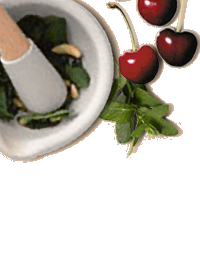
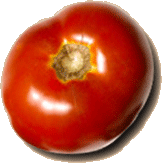
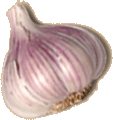
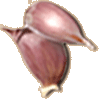
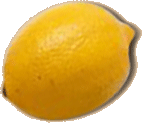
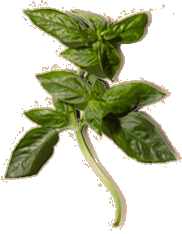
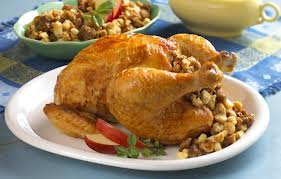

leave a comment